

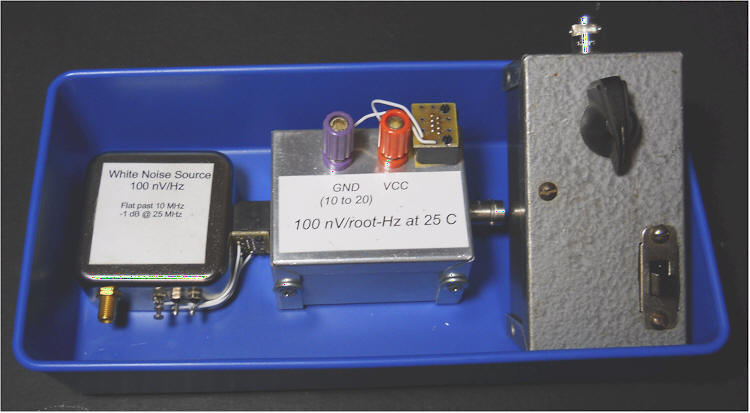
This handy noise generator produces white noise from well below 1 Hz to over 40 kHz by amplifying the noise from two resistors. Use good quality metal film resistors for consistent results. This design uses an older LF356 JFET op-amp and many others will work. See the noise calculations to determine if another op-amp is suitable. The best choice of op-amp will be an FET type.
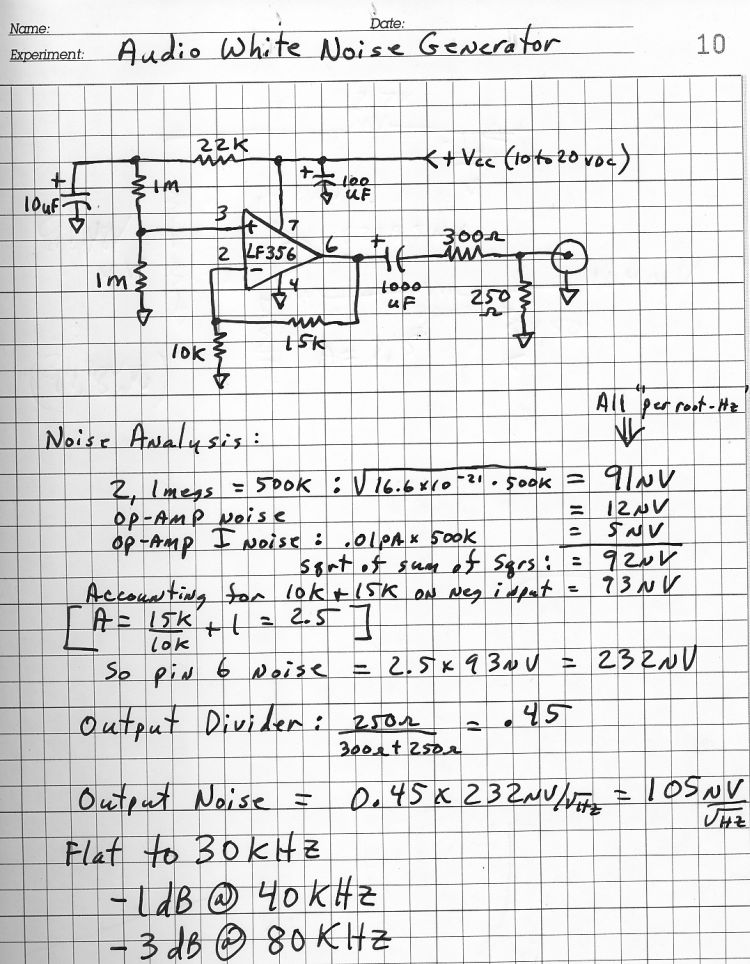
The noise generator is built into a small aluminum mini-box:
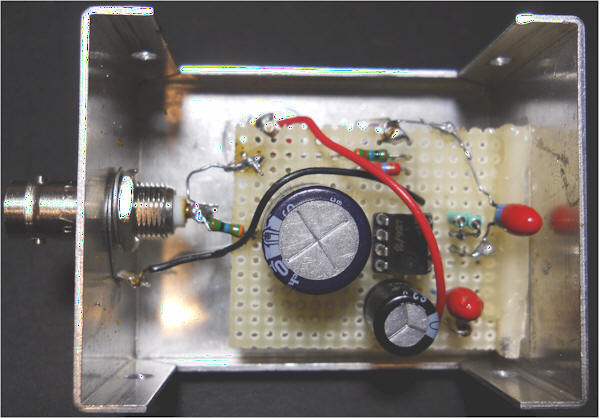
Many op-amps will work, especially FET input types.
The device is intended to drive fairly high-impedance loads, typically an amplifier input.
This noise generator amplifies the noise from a resistor using a fast op-amp to provide a very predictable and flat noise spectrum from audio up to about 25 MHz. This older design uses an obsolete CLC425 but newer op-amps will work well. The noise calculations are included so that the experimenter may perform the calculation for newer amps.
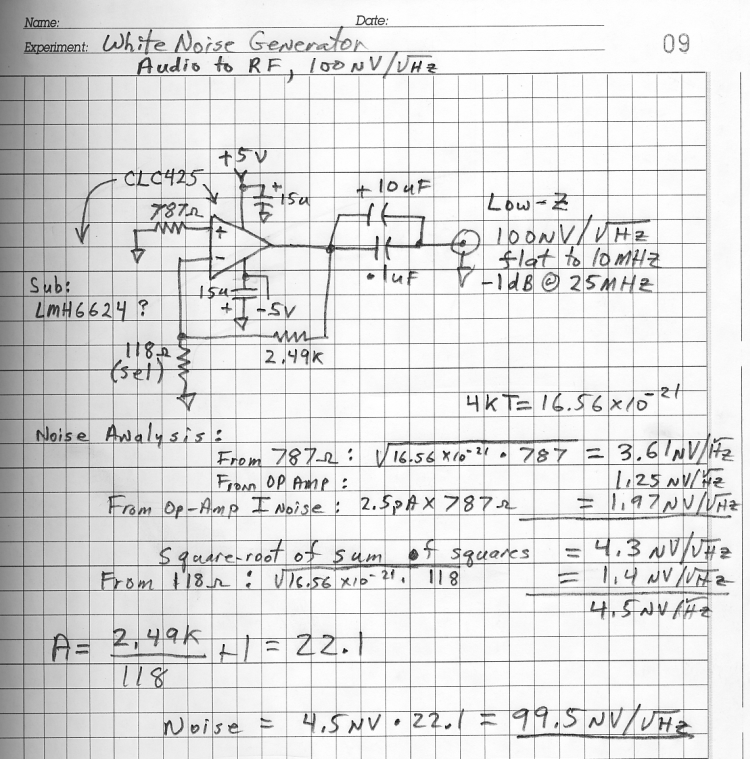
I make oscillators so I have lots of oscillator cans but any metal enclosure will work. Not shown in the schematic are a couple of 6.8 volt zeners in series with my +-12 volt supplies to drop the voltage to near +-5 volts for the op-amp.
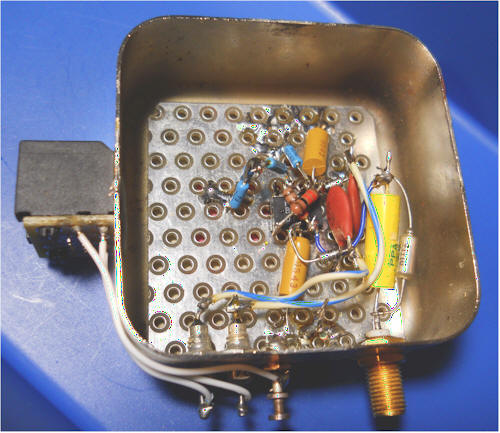
Many of these fast op-amps have lots of input noise current, so the resistor on the input will be fairly low in value. You don't want to try to count on the noise current being a particular value. Even at 780 ohms, the noise current is generating a significant part of the total.
Here's an odd noise source I found in a surplus purchase. It passes current through a 1N21 diode to generate broadband white noise. The level is pretty low.
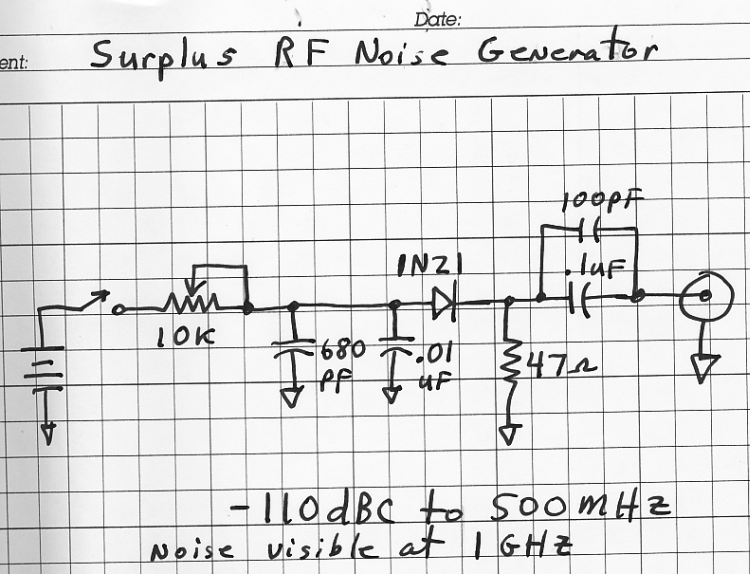
It's built into an ordinary aluminum Bud Box:
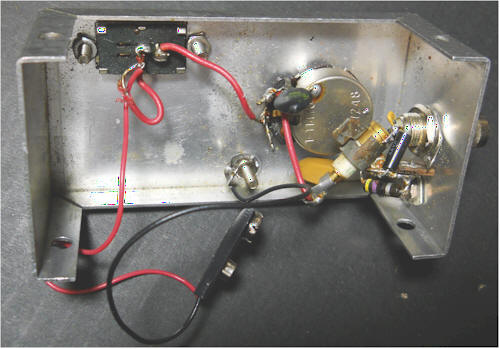
It's flat to 500 MHz and becomes too low to measure with my analyzer above 1 GHz.
I don't think much of this thing. It looks more and more like a ready-to-use project box with a BNC, pot, and switch.